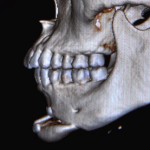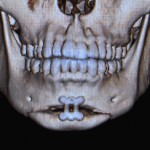In facial reshaping surgery, it is important to appreciate the differences between a Western vs an Asian type face. While a strong jawline is attractive by Western standards, a more narrow lower face that makes an oval or a v-line look is preferred. To achieve this Asian form of mandibular contouring surgery, various forms of sliding genioplasties and lower border mandibular ostectomies have been developed.

In the October 2014 issue of Plastic and Reconstructive Surgery Global Open issue, the article entitled ‘Inverted V-shape Osteotomy with Central Strip Resection: A Simultaneous Narrowing and Vertical Reduction Genioplasty’ was published. In this paper, the authors introduce a simple but very effective method to reduce the chin width and length simultaneously with an inverted V-shaped osteotomy and central segment resection instead of a horizontal osteotomy and central segment resection. Over a three year period, nearly 550 patients (75% female) underwent mandibular contouring surgery of which over 300 were treated with this narrowing and vertical reduction genioplasty technique. No significant complications occurred other than about 1/3 of the patients experienced transient mental nerve numbness which went on to full recovery.
While there are different ways to change the bony shape of the chin, this ingenious method is a clever geometric modification of a traditional linear approach to a sliding genioplasty.The square and long face can be effectively changed into a more slender oval shape as the chin is similarly changed. It also requires a minimal amount of plate and screw fixation and appears very stable for optimal healing.
Dr. Barry Eppley
Indianapolis, Indiana



